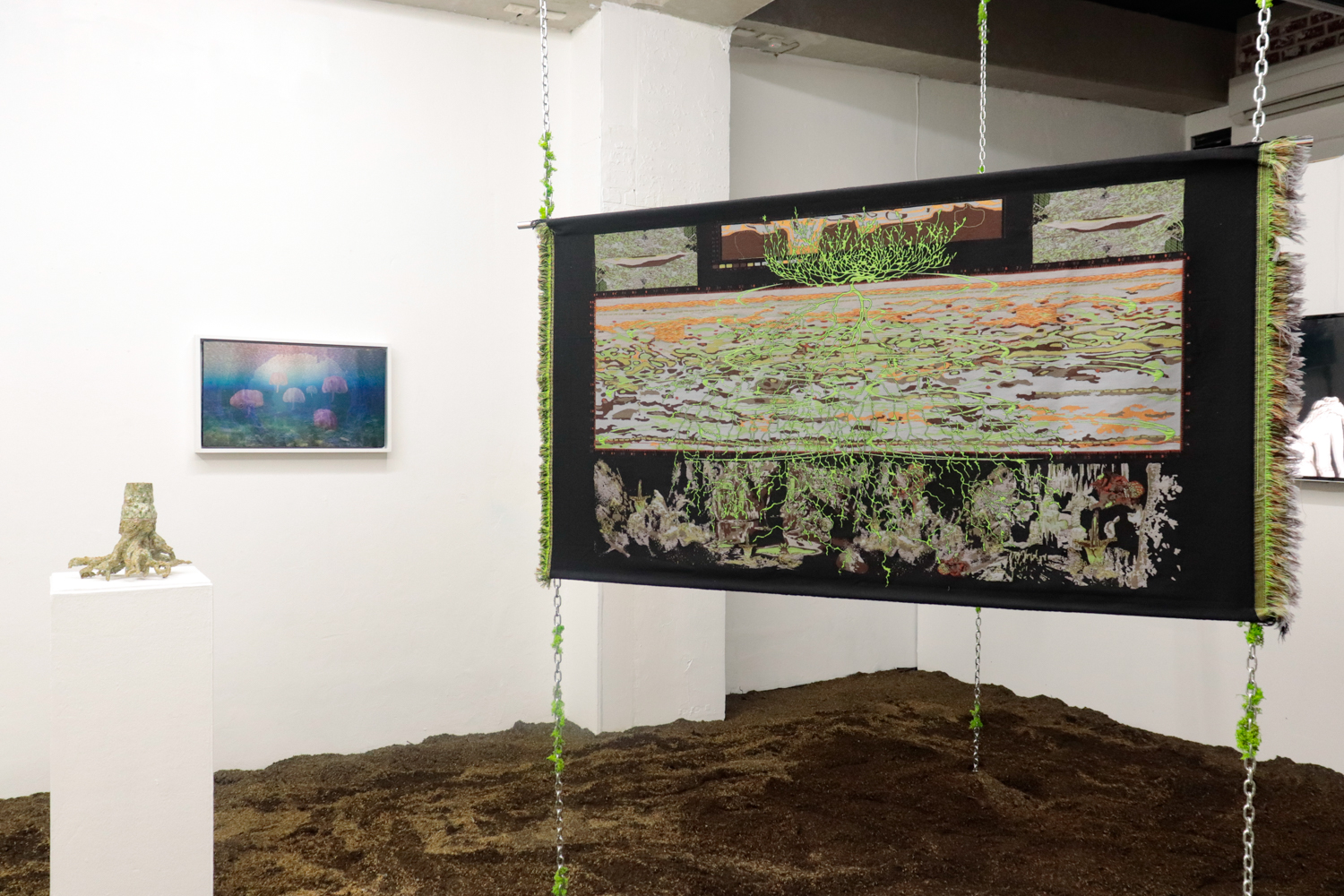The World’s Green is Rotting Lime // Possible Void, 2023
Multi-sensorial installation with Sculpture, Videowork, and Tapestry
The World’s Green is Rotting Lime // Possible Void, 2023
Multi-sensorial installation with Sculpture, Videowork, and Tapestry
The World’s Green is Rotting Lime is an audiovisual installation that speculates on future ecologies emerging from plastic pollution. The work follows the discovery of a new parasitic flower morphospecies that has evolved to adapt to the infiltrating amounts of microplastics found in the earth’s layers. The story takes place in the Cacupangan cave system in Pangasinan, the Philippines, a subterranean kilometers-long labyrinth of tunnels and underground rivers. Taking its color from the acidic green plastics of Mountain Dew soda bottles, which are commonly upcycled and repurposed across rural provinces, the emergence of the flower reveals a history and future far beyond its isolated habitat. The work resulted from the artist’s ongoing field research on coastal climate adaptation strategies between the Philippines and the Netherlands, uncovering how crisis adaptation is shaped by local environmental, economic, and cultural conditions.

In Possible Void, the discovery of a new parasitic flower begins with a scan: silent pulses sent into the ground via electrical resistivity tomography and ground-penetrating radar. Possible Void emerges where the land is both read and imagined. This jacquard tapestry merges speculative scenes of underground discovery with non-extractive visualisations of Luzon’s subsurface in the Philippines, uncovering a fragile ecology forged from the residue of our petrochemical present. In the work, a fictional parasitic flower evolves as a response to the infiltration of microplastics deep within the earth’s layers. This imagined species, inspired by the corpse flower Rafflesia Arnoldii—a queer, pungent blossom dependent on a singular vine—becomes a symbol of radical adaptation. Acidic green in hue, its colour is taken from Mountain Dew bottles which are commonly being upcycled across the Philippines. They also form part of a broader, toxic material inheritance, one that seeps into geological strata, into myth, into possible futures.
